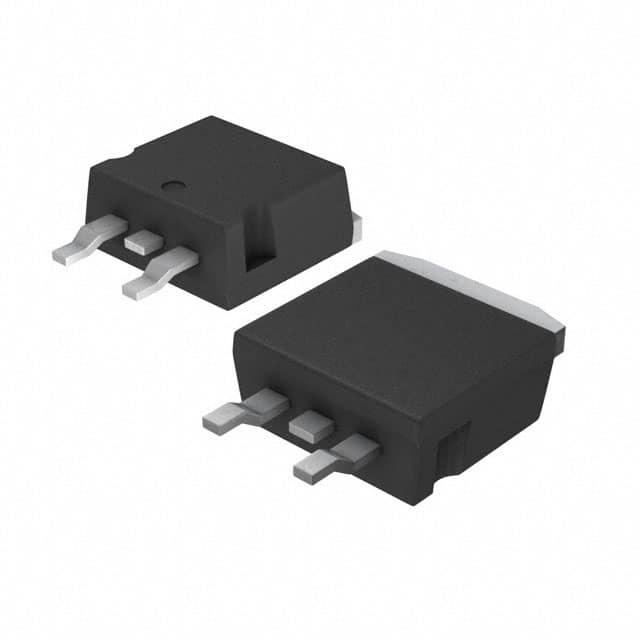Viz Specifikace pro podrobnosti o produktu.

STPS2530CG
Introduction
The STPS2530CG is a Schottky diode belonging to the power management product category. It is widely used in various electronic applications due to its unique characteristics and performance.
Basic Information Overview
- Category: Power Management
- Use: Rectification and power supply applications
- Characteristics: High efficiency, low forward voltage drop, fast switching speed
- Package: TO-220AB
- Essence: Efficient power rectification
- Packaging/Quantity: Typically available in reels of 1000 units
Specifications
- Voltage Rating: 30V
- Current Rating: 25A
- Forward Voltage Drop: 0.55V at 15A
- Reverse Leakage Current: 50µA at 25V
- Operating Temperature Range: -65°C to 175°C
Detailed Pin Configuration
The STPS2530CG features a standard TO-220AB package with two pins for connection. The pin configuration is as follows: 1. Anode (A) 2. Cathode (K)
Functional Features
- High efficiency in power rectification
- Low forward voltage drop leading to reduced power loss
- Fast switching speed for improved system response
Advantages and Disadvantages
Advantages - High efficiency - Low forward voltage drop - Fast switching speed
Disadvantages - Relatively high reverse leakage current
Working Principles
The STPS2530CG operates based on the Schottky diode principle, where it utilizes a metal-semiconductor junction to enable efficient power rectification. When a forward voltage is applied, the diode allows current to flow with minimal voltage drop, resulting in high efficiency.
Detailed Application Field Plans
The STPS2530CG finds extensive use in the following application fields: - Switching power supplies - DC-DC converters - Solar panel bypass diodes - Automotive electronics - Industrial power systems
Detailed and Complete Alternative Models
- STPS2045CT: 45V, 20A Schottky diode
- STPS30150CW: 150V, 30A Schottky diode
- STPS10L25G: 25V, 10A Schottky diode
In conclusion, the STPS2530CG Schottky diode offers high efficiency and fast switching speed, making it an ideal choice for various power management applications.
Word Count: 315
Seznam 10 běžných otázek a odpovědí souvisejících s aplikací STPS2530CG v technických řešeních
Sure, here are 10 common questions and answers related to the application of STPS2530CG in technical solutions:
Q: What is the STPS2530CG? A: The STPS2530CG is a dual Schottky power rectifier designed for high frequency DC-to-DC converters, switching mode power supplies, and reverse battery protection applications.
Q: What is the maximum average forward current of the STPS2530CG? A: The maximum average forward current of the STPS2530CG is 25A per diode.
Q: What is the maximum repetitive peak reverse voltage of the STPS2530CG? A: The maximum repetitive peak reverse voltage of the STPS2530CG is 30V.
Q: What are the typical applications of the STPS2530CG? A: Typical applications include output rectification in DC-to-DC converters, freewheeling diodes, OR-ing diodes, and reverse battery protection.
Q: What is the operating junction temperature range of the STPS2530CG? A: The operating junction temperature range is -65°C to +175°C.
Q: Is the STPS2530CG suitable for high frequency applications? A: Yes, the STPS2530CG is specifically designed for high frequency applications such as switching mode power supplies.
Q: What is the package type of the STPS2530CG? A: The STPS2530CG comes in a TO-220AB package.
Q: Can the STPS2530CG be used for reverse battery protection? A: Yes, the STPS2530CG is suitable for reverse battery protection due to its low forward voltage drop and fast reverse recovery time.
Q: Does the STPS2530CG have a low leakage current? A: Yes, the STPS2530CG has a low leakage current which makes it suitable for energy-efficient designs.
Q: Are there any recommended layout considerations for using the STPS2530CG? A: Yes, it is recommended to keep the traces short and minimize loop area to reduce parasitic inductance and improve performance.
I hope these answers provide the information you were looking for! If you need further details on any of these questions, feel free to ask.

